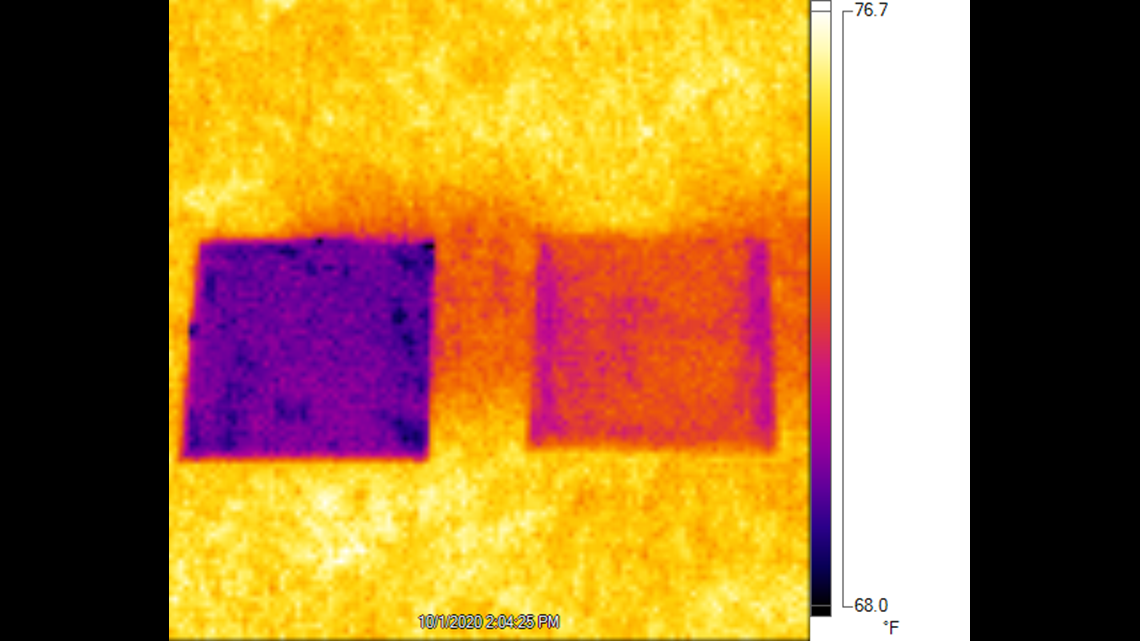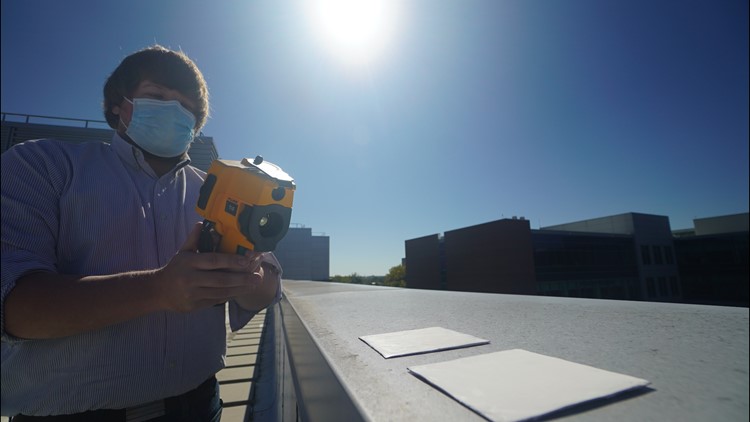WEST LAFAYETTE, Ind. — Purdue University engineers have created a formula for white paint that they say can keep surfaces up to 18 degrees Fahrenheit cooler than their surroundings without consuming energy.
The paint acts almost like a surface refrigerator and could save on air conditioning by absorbing nearly no solar energy and sending heat away from surfaces such as buildings.
Xiulin Ruan, a Purdue professor of mechanical engineering, said the concept is counterintuitive, but the paint actually works, even in direct sunlight.
Not only does the paint send heat away from a surface, it also sends the heat away from Earth into deep space where heat travels indefinitely at the speed of light. The reflected heat would not contribute to global warming.
In a paper published Oct. 21, 2020 in the journal Cell Reports Physical Science, the researchers show that compared with commercial white paint, the Purdue paint can maintain a lower temperature under direct sunlight and reflect more ultraviolet rays.
Their proof is infrared camera images taken of the two paints in rooftop experiments.


“We’re not moving heat from the surface to the atmosphere. We’re just dumping it all out into the universe, which is an infinite heat sink,” said Xiangyu Li, a postdoctoral researcher at the Massachusetts Institute of Technology who worked on this project as a Ph.D. student in Ruan’s lab.
If the Purdue paint were applied to surfaces including roads, rooftops and cars all over the world, the researchers say it could reduce global warming.
Commercial “heat rejecting paints” currently on the market reflect only 80%-90% of sunlight and cannot achieve temperatures below their surroundings. The white paint that Purdue researchers created reflects 95.5% sunlight and efficiently radiates infrared heat.
The concept dates back to the 1970s and the Purdue project has been going on for six years. After researching more than 100 different material combinations, Purdue researchers decided on a formula using plentiful calcium carbonate, which is commonly found in rocks and seashells.
Used as the paint’s filler, calcium carbonate allowed the formulation to behave like a commercial white paint but with greatly enhanced cooling properties. The calcium carbonate absorbs almost no ultraviolet rays.
But that's not the only benefit.
The paint would be both cheaper to produce than its commercial alternative and could save about a dollar per day that would have been spent on air conditioning for a one-story house of approximately 1,076 square feet.
Of course, homeowners would have to paint their roofs entirely white to get the full benefit, but by cutting down on air conditioning, they would be using less energy produced by coal, which could in turn lead to reduced carbon dioxide emissions, according to Joseph Peoples, a Purdue PhD student in mechanical engineering who co-authored the study.
The researchers have applied for an international patent and are now working on developing other paint colors that could have cooling benefits.



